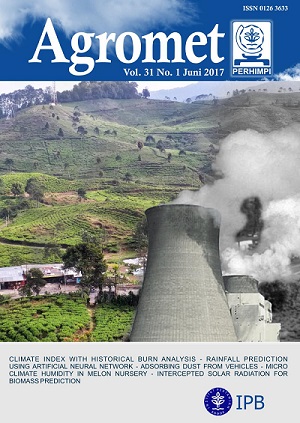Analysis of Climate Index with Historical Burn Analysis Method for Climate Change Adaptation (A Case Study in Pacitan District, East Java)
Abstract
Drought recurrently occurs in Indonesia, and it is one of the climate-related hazards that has a major impact on agriculture and food security. However, there is no a scheme, which allows any damages in agriculture associated with drought event will get an insurance. This study aims to analyze the climate index based on the potency of drought in Pacitan District, East Java to support the development of climate index insurance as an effort to climate change adaptation. This study used a climate index derived from monthly rainfall data, which was calculated based on the historical burn analysis (HBA) method. We examined climate index and measured exit value as representing of the lowest value which payment of insurance should be fully paid. Our results showed that the value varies among sub-districts in Pacitan. Kebonagung sub-district revealed the highest exit value (89 mm), which means the insurance company should pay the full insurance coverage if the rainfall in the period insured below 89 mm. The lowest exit value (18 mm) was in Pringkuku sub-district. Our finding revealed that the index HBA is suitable to be applied in regions with limited climate data. Furthermore, our approach could be one of the strategies to cope with drought to stabilize rice production during the dry season. For wide implementation, supports from government through regulation is needed.
Authors
SugiartoY., EstiningtyasW., & DewiW. S. (2017). Analysis of Climate Index with Historical Burn Analysis Method for Climate Change Adaptation (A Case Study in Pacitan District, East Java). Agromet, 31(1), 1-10. https://doi.org/10.29244/j.agromet.31.1.1-10
Copyright and license info is not available

